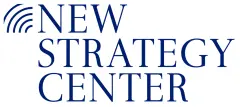1. Allcott, H., & Gentzkow, M. (2017). Social Media and Fake News in the 2016 Election. Journal of Economic Perspective, 31(2), 211-236.
2. Andreadou, K., Papadopoulos, S., Apostolidis, L., Krithara, A., & Kompatsiaris, Y. (2015). Media REVEALr: A social multimedia monitoring and intelligence system for web multimedia verification. Pacific-Asia Workshop on Intelligence and Security Informatics.
3. Brandtzaeg, P. B., Lüders, M., Spangenberg, J., Rath-Wiggins, L., & Følstad, A. (2016). Emerging journalistic verification practices concerning social media. Journalism Practice, 10(3), 323–342.
4. Choraś, M., Demestichas, K., Giełczyk, A., & Herrero, Á. (2021). Advanced Machine Learning techniques for fake news (online disinformation) detection: A systematic mapping study. Applied Soft Computing Journal(101), 1-15.
5. Conroy, N. J., Rubin, V. L., & Chen, Y. (2015). Automatic Deception Detection: Methods for Finding Fake News. Proceedings of the Association for Information Science and Technology, 52(1), 1-4.
6. Feng, V. W., & Hirst, G. (2013). Detecting Deceptive Opinions with Profile Compatibility. Nagoya, Japan: Proceedings of the Sixth International Joint Conference on Natural Language Processing.
7. Feng, S., Banerjee, R., & Choi, Y. (2012). Syntactic Stylometry for Deception Detection. Jeju Island, Korea: Proceedings of the 50th Annual Meeting of the Association for Computational Linguistics (Volume 2: Short Papers).
8. Fowler, G. (2022). Fake News, Its Impact and How Tech Can Combat Misinformation. Retrieved January 11, 2023, from https://www.forbes.com/sites/forbesbusinessdevelopmentcouncil/2022/08/22/fake-news-its-impact-and-how-tech-can-combat-misinformation/?sh=308d6bab354f
9. Fraga-Lamas, P., & Fernandez-Carames, T. M. (2020). Fake News, Disinformation, and Deepfakes: Leveraging Distributed Ledger Technologies and Blockchain to Combat Digital Deception and Counterfeit Reality. IT Professional, 22(2), 53-59.
10. Fuller, C., Biros, D. P., & Wilson, R. L. (2009). Decision Support for Determining Veracity Via Linguistic-Based Cues. Decision Support Systems, 46(3), 695-703.
11. Garimella, K., Gionis, A., Parotsidis, N., & Tatti, N. (2017). Balancing Information Exposure in Social Networks. (pp. 4663-4671). Advances in Neural Information Processing Systems.
12. Kessler, G., Rizzo, S., Kelly, M. (2019, December 16). President Trump has made 15,413 false or misleading claims over 1,055 days. The Washington Post. https://www.washingtonpost.com/politics/2019/12/16/president-trump-has-made-false-or-misleading-claims-over-days/
13. Menn, J., Ingram, D. (2017, September 6). Facebook says likely Russian-based operation funded U.S. ads with political message. Reuters. https://www.reuters.com/article/us-facebook-propaganda-idUSKCN1BH2VX
14. Middleton, S. E., & Krivcovs, V. (2016). eoparsing and Geosemantics for Social Media: Spatiotemporal Grounding of Content Propagating Rumors to Support Trust and Veracity Analysis during Breaking News. ACM Transactions on Information Systems, 34(3), 1-26.
15. Parikh, S. B., & Atrey, P. K. (2018). Media-Rich Fake News Detection: A Survey. 2018 IEEE Conference on Multimedia Information Processing and Retrieval.
16. Pennycook, G., & Rand, D. G. (2019). Who falls for fake news? The roles of bullshit receptivity, overclaiming, familiarity, and analytic thinking. Journal of Personality, 1-63.
17. Posetti, J., Matthews, A. (2018). A short guide to the history of ’fake news’ and disinformation. International Centre for Journalists. https://www.icfj.org/sites/default/files/2018-07/A%20Short%20Guide%20to%20History%20of%20Fake%20News%20and%20Disinformation_ICFJ%20Final.pdf
18. Rubin, V. L., & Lukoianova, T. (2014). Truth and Deception at the Rhetorical Structure Level. Journal of the Association for Information Science and Technology, 66(5), 905-917.
19. Sharma, K., Qian, F., Jiang, H., Ruchansky, N., Zhang, M., & Liu, Y. (2019). Combating Fake News: A Survey on Identification and Mitigation Techniques. ACM Transactions on Intelligent Systems and Technology, 10(3), 1-42.
20. Shu, K., Sliva, A., Wang, S., Tang, J., & Liu, H. (2017). Fake News Detection on Social Media: A Data Mining Perspective. ACM SIGKDD Explor. Newslett, 19(1), 22-36.
21. Zubiaga, A., Aker, A., Bontcheva, K., Liakata, M., & Procter, R. (2018). Detection and Resolution of Rumours in Social Media: A Survey. ACM Computing Surveys, 51(2), 1-36.





